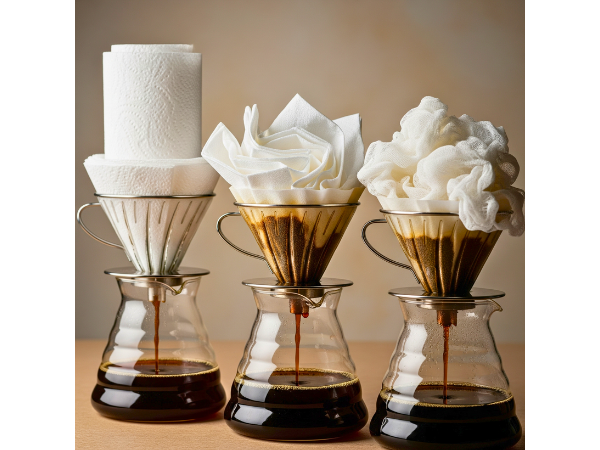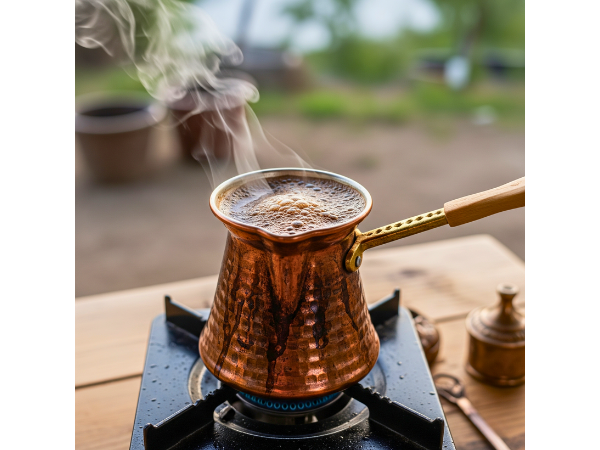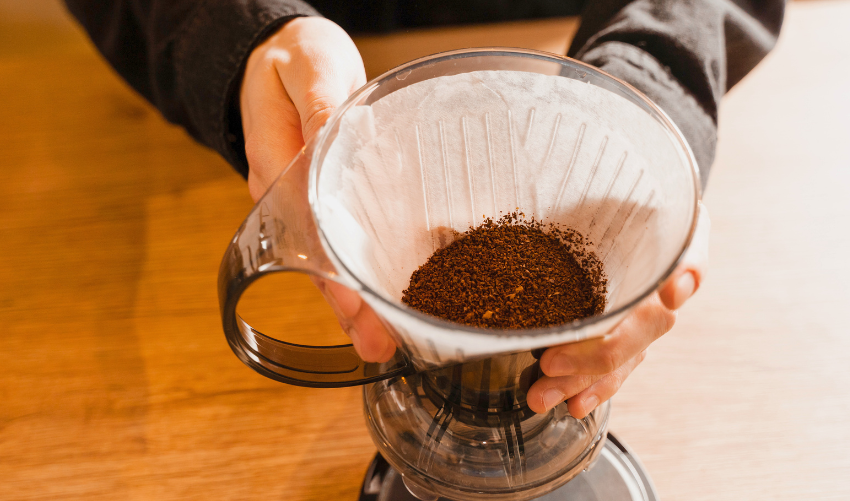Are you out of coffee filters and need a quick solution? Don’t worry!
The good news is that you don’t have to sacrifice your morning brew. There are plenty of clever alternatives you can use to filter your coffee.
The Filter Emergency: Why You Might Need Alternatives
Running out of coffee filters can feel like a crisis—especially mid-morning. Whether you’re out of supplies, cutting waste, or just curious, knowing your filter-free options ensures you never have to skip your brew.
Unexpected Situations
Running out of filters is a common scenario for any coffee lover. It can ruin your morning routine or your camping trip. Here are some situations where you might need alternatives:
- Home Supplies Depleted: You thought you had more filters.
- Travel & Camping: When traditional supplies aren’t available.
- Last-Minute Guests: You didn’t plan for extra coffee drinkers.
In these cases, you might feel stuck. Fear not! Here are some great alternatives:
| Alternative | How to Use |
|---|---|
| Paper Towels | Fold and place in your coffee maker. |
| Cloth Napkin | Use as a filter in a coffee cone. |
| Fine Mesh Strainer | Pour coffee through it to catch grounds. |
| Cheesecloth | Wrap coffee grounds and steep in hot water. |
Experimenting with these options can lead to unique flavors in your cup. Each method offers a different texture and taste. The adventure of coffee brewing doesn’t have to stop!
Understanding Filtration
Filters play a key role in brewing coffee. They prevent grounds from entering your cup. Different filter types impact oil and sediment levels. This affects the taste and texture of your coffee. Here’s a closer look at how filtration works:
- Types of Filters:
- Cone filters
- Flat-bottom filters
- Permanent filters
- Materials:
- Paper
- Metal
- Cloth
Each filter type affects flavor extraction differently. For example, paper filters absorb oils, resulting in a cleaner cup. Metal filters allow more oils, providing a richer taste.
Common Household Alternatives (Diy Filters)
Common household items can serve as effective DIY filters. These alternatives are often easy to find and can help you brew a great cup of coffee. Let’s explore some of the best options you have at home.
Paper Products
Paper products are among the easiest alternatives for coffee filters. They are widely available and can help you get the job done. Here are some popular options:
- Paper Towels: Readily available but can impart a paper taste. Use unbleached paper towels if possible for better flavor.
- Napkins/Tissues: Less ideal as they can tear easily. Best for very fine grinds or desperate measures.
When using paper products, consider the following:
| Product | Pros | Cons |
|---|---|---|
| Paper Towels | Easy to find, effective | May affect flavor |
| Napkins/Tissues | Convenient | Can tear, not very durable |
Always monitor the brewing time. Paper filters may alter the taste of your coffee. Experiment with different types to find what works best for you.

Fabric Options
Fabric options provide a sustainable way to filter coffee. Many people have these items at home. They are often reusable, making them an excellent choice. Here are some fabric alternatives:
- Cheesecloth/Muslin: Excellent for straining. It can be reused if cleaned well.
- Clean Cloth (Sock/Handkerchief): Must be meticulously clean and scent-free. It provides good filtration.
- Reusable Tea Bags: If large enough, these can hold grounds for steeping.
Fabric filters can enhance your coffee experience. They allow more oils to pass through, resulting in a richer flavor. Here are some tips for using fabric filters:
- Always wash the fabric thoroughly before use.
- Ensure the fabric is free from any detergent residue.
- Adjust the grind size for optimal brewing.
Using fabric options can be a great way to enjoy coffee while reducing waste.
Brewing Methods That Don’t Need Paper Filters
Many methods exist for brewing coffee without paper filters. These methods offer unique flavors and experiences. They let you enjoy coffee in a more natural way.
The French Press Method
The French press is a classic method for brewing coffee. It uses a plunger system that separates coffee grounds from the liquid. This method creates a full-bodied brew. It allows more oils and fines, resulting in a rich and robust cup.
To brew coffee using a French press, follow these steps:
- Coarsely grind your coffee beans.
- Measure about 1 tablespoon of coffee for every 4 ounces of water.
- Boil water and let it cool for about 30 seconds.
- Add coffee grounds to the French press.
- Pour hot water over the grounds.
- Stir gently, and place the lid on the press.
- Let it steep for about 4 minutes.
- Slowly push down the plunger to separate the grounds.
- Pour and enjoy your coffee!
This method produces a rich flavor. It’s perfect for coffee lovers who want a deeper taste. The French press is also easy to clean. Just rinse it out after use. No paper filters mean less waste.
Cowboy Coffee
Cowboy coffee is a simple and rustic way to brew coffee. It relies on direct immersion. Coffee grounds are boiled directly in water. This method has been used for years by campers and cowboys.
Here’s how to make cowboy coffee:
- Start with coarsely ground coffee.
- Boil water in a pot over a campfire or stove.
- Add coffee grounds to the boiling water. Use about 2 tablespoons per cup.
- Remove the pot from heat and let it steep for a few minutes.
- Carefully pour the coffee into cups, leaving the grounds at the bottom.
This brewing method gives a strong, bold flavor. It’s not as clean as other methods. Some grounds may end up in your cup. But that is part of the charm.
Turkish Coffee
Turkish coffee offers a unique brewing experience. It uses an ultra-fine grind of coffee. The coffee is brewed in a cezve (ibrik). This special pot lets you create a rich and aromatic cup.
Follow these steps to brew Turkish coffee:
- Measure about 1-2 teaspoons of ultra-fine coffee per cup.
- Add water to the cezve, about 3 ounces per serving.
- Add sugar if desired, and stir to combine.
- Heat the cezve on low until it starts to foam.
- Remove it from heat just before it boils.
- Pour slowly into cups, allowing grounds to settle at the bottom.
This method results in a thick and strong coffee. The grounds remain in the cup, creating an unfiltered experience. Many enjoy the ritual of brewing and drinking Turkish coffee.

Tips For Success & What To Avoid
Tips for success can help you brew a delicious cup without a traditional filter. Avoiding certain materials is just as important to ensure a safe and enjoyable drink.
Optimizing Your Makeshift Filter
Creating a makeshift coffee filter can be fun and simple. Here are some effective alternatives:
- Paper Towels: Use a clean paper towel. Fold it to fit your coffee maker. Rinse thoroughly. This removes any paper taste.
- Cloth Napkins: A clean cloth napkin works well. Always pre-rinse cloth alternatives to minimize off-flavors.
- Mesh Strainer: A fine mesh strainer can filter coffee grounds. Pour slowly to avoid overflow or tearing.
- Cheesecloth: Layer cheesecloth for a fine filter. Ensure it is clean and food-safe.
Follow these tips for the best results:
- Coarse Grind Preferred: For DIY methods, a coarser grind reduces sediment.
- Slow Pour: Pour hot water slowly and carefully. This helps prevent overflow or tearing of the filter.
- Test Your Method: Try different materials to see which one you prefer.
After brewing, discard grounds responsibly and rinse reusable filters well. A clean setup not only improves taste but extends the life of your tools.
Health & Safety Considerations
Safety is key when using alternative materials. Here are important points to consider:
- Material Safety: Ensure alternatives are clean and food-safe.
- Avoid Synthetics: Do not use plastics that can melt or leach chemicals into hot water.
- Beware of Toxins: Never use anything treated with harsh chemicals or dyes.
Follow these precautions:
- Rinse thoroughly any materials before use.
- Check for any signs of wear or damage. Avoid using worn items.
- Test materials with hot water to ensure they do not release harmful substances.
Using safe and clean materials will enhance your coffee experience. Remember, your health comes first. Enjoy brewing!
